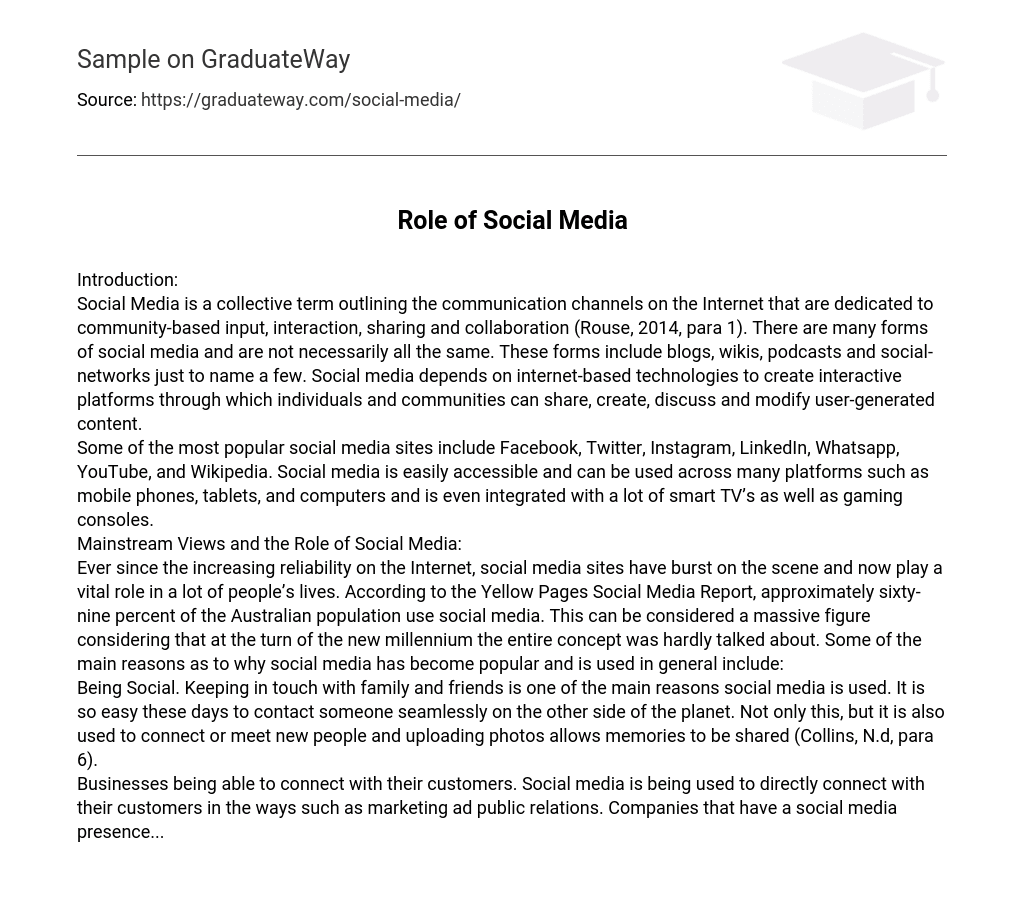Social Media is a collective term outlining the communication channels on the Internet that are dedicated to community-based input, interaction, sharing and collaboration (Rouse, 2014, para 1). There are many forms of social media and are not necessarily all the same. These forms include blogs, wikis, podcasts and social-networks just to name a few.
Social media depends on internet-based technologies to create interactive platforms through which individuals and communities can share, create, discuss and modify user-generated content. Some of the most popular social media sites include Facebook, Twitter, Instagram, LinkedIn, Whatsapp, YouTube, and Wikipedia.
Social media is easily accessible and can be used across many platforms such as mobile phones, tablets, and computers and is even integrated with a lot of smart TV’s as well as gaming consoles.
Mainstream Views and the Role of Social Media: Ever since the increasing reliability on the Internet, social media sites have burst on the scene and now play a vital role in a lot of people’s lives. According to the Yellow Pages Social Media Report, approximately sixty-nine percent of the Australian population use social media. This can be considered a massive figure considering that at the turn of the new millennium the entire concept was hardly talked about.
Some of the main reasons as to why social media has become popular and is used in general include: Being Social. Keeping in touch with family and friends is one of the main reasons social media is used. It is so easy these days to contact someone seamlessly on the other side of the planet. Not only this, but it is also used to connect or meet new people and uploading photos allows memories to be shared (Collins, N.d, para 6).
Businesses being able to connect with their customers. Social media is being used to directly connect with their customers in the ways such as marketing ad public relations.





